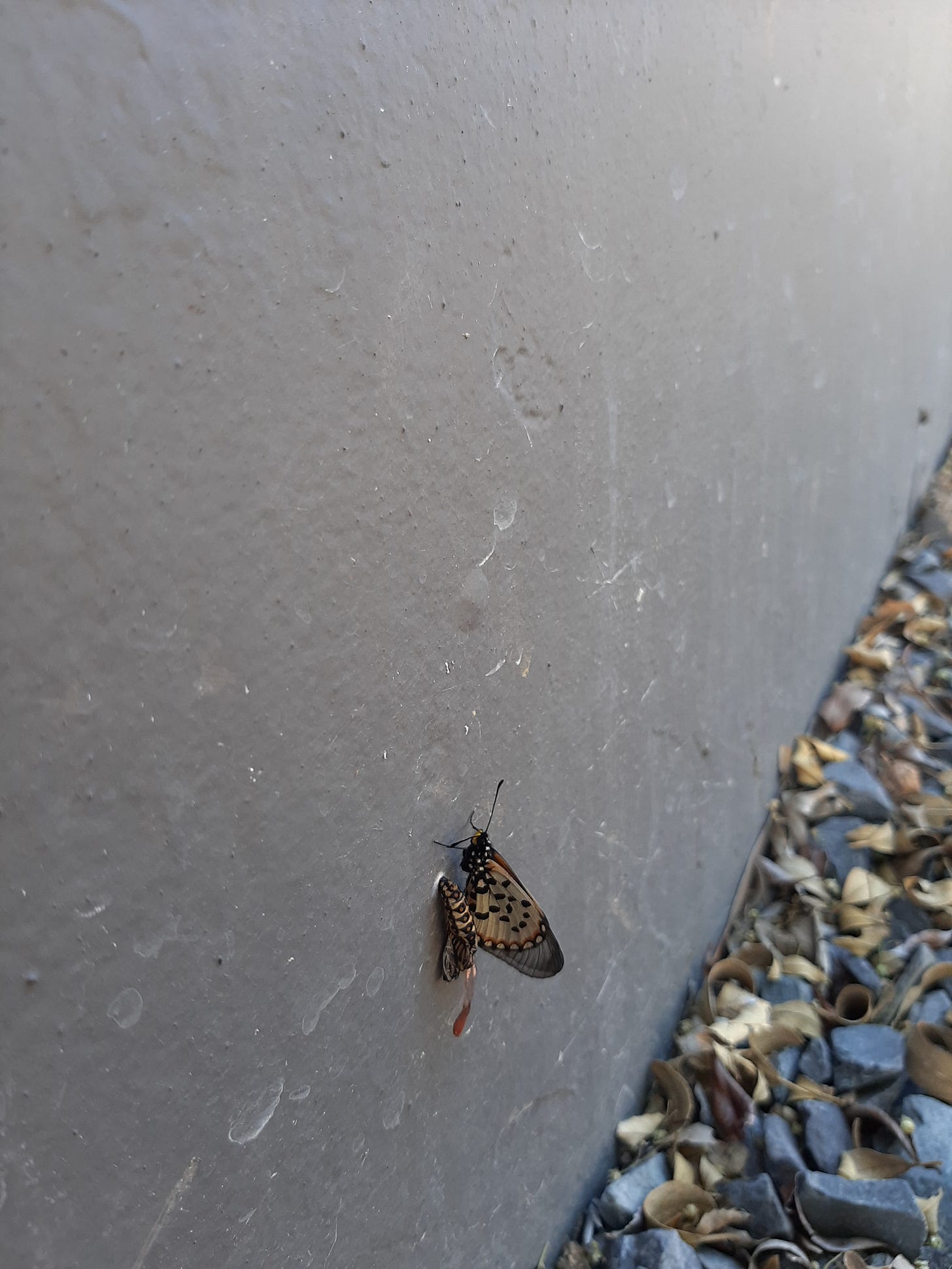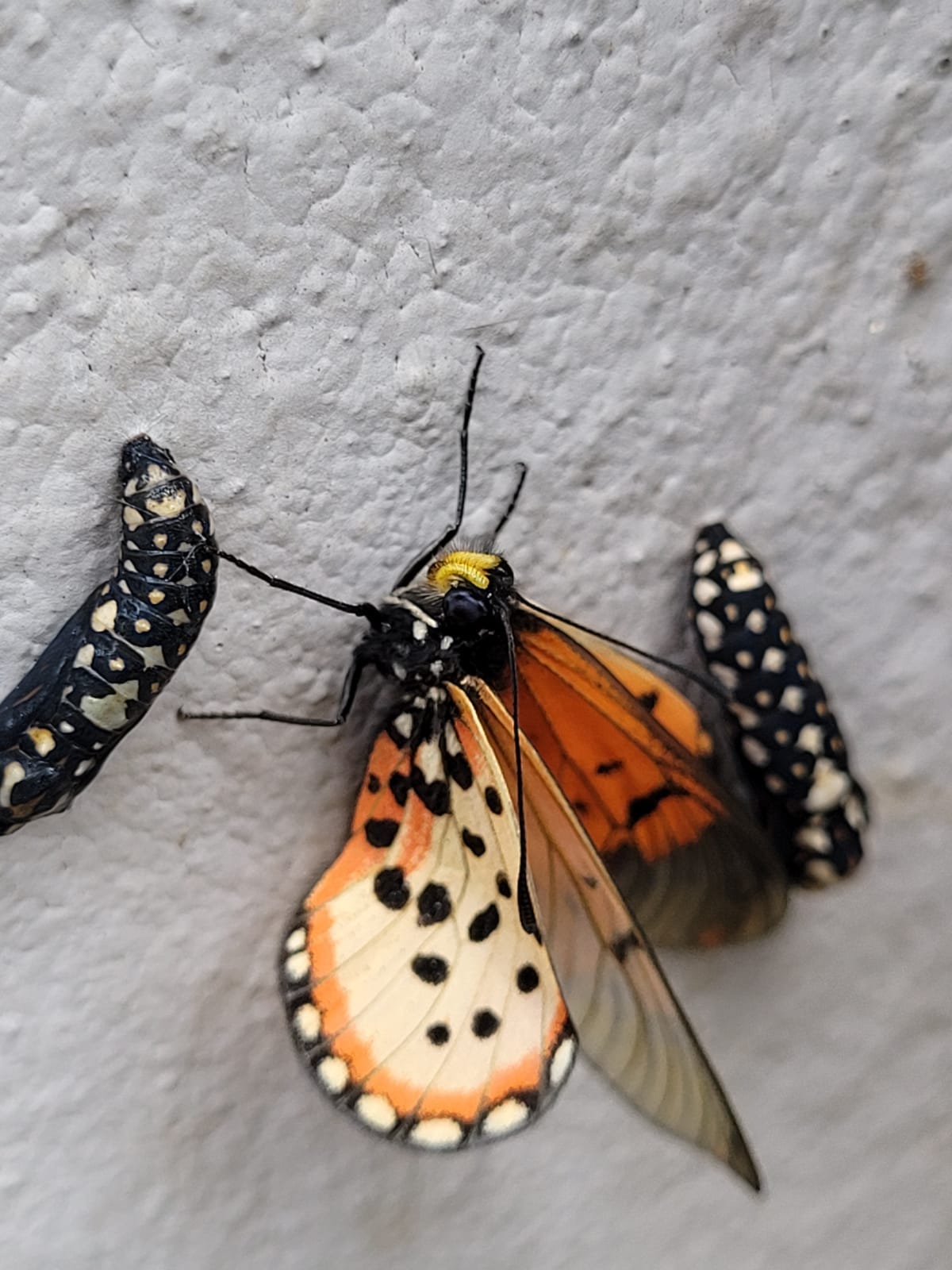The garden acraea
Been a while since I have posted something here - blame it on the holidays.
It’s that time of the year again when I get queries about a “worm” and pupae on the walls of buildings. Normally it’s a panic stricken call or photo or message, because the caterpillars are quite spiny and “dangerous” looking. (More about dangerous looking bugs in a later post).
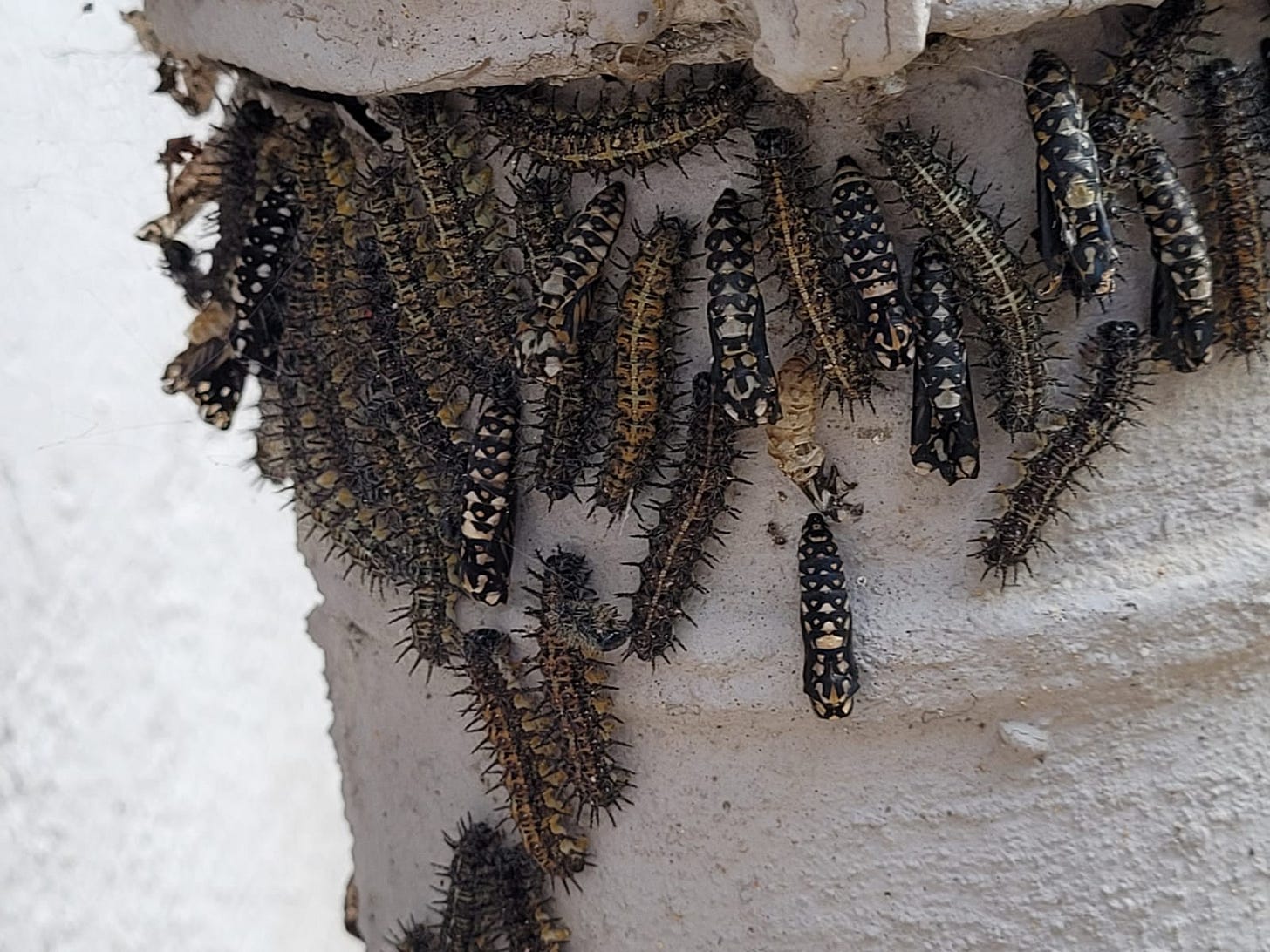

The culprit in this case is the garden Acraea. This is a butterfly, Acraea horta in the family Nymphalidae (Woodhall). They are common this time of the year, but do occur more or less throughout the year, and they are one of the most common butterflies seen in gardens in South Africa.
What amazes me is that I often get asked how to get rid of them, with the assumption that there must be something that can be sprayed to kill them. I do understand the motivation – many times the queries come from pest control people/companies, and they have been asked about these insects by a client or potential client. So the motivation is there to spray something, thus generating income for the PCO company or individual. But why would you want to kill butterflies? Why are they a problem in the first place? OK, the pupae might not look great on a wall, but why not leave them there until all the adult butterflies have emerged and then just brush the remaining pupal cases off the wall? And even if not emerged, one can still brush all the pupae off a wall without having to resort to an insecticide. For many insects the pupal stage is relatively resistant to insecticides, and trying to control insects by targeting the pupal stage with insecticides is unsuccessful.
This theme of wanting to use insecticides to wipe out innocuous bugs was brought home to me after my last substack post about the “slugs” in my hedge. The post led to a chain of e-mails that ended up recommending either a drenched systemic insecticide, or a foliar spray of insecticide. I am quite sure the hedge will recover from this slug assault. At the moment there are no larvae to be found on the hedge – they have either dropped off to pupate in the soil, or were washed off with the rain we have had recently. The hedge is also home to chameleons, so I would never think of spraying any insecticide there. So why do so many people have a knee-jerk reaction to getting rid of all and any naturally occurring bugs in the environment? Without trying to be philosophical about this topic, are people so far removed from nature these days that their first reaction to the presence of bugs is to get rid of them? And for someone who spends their time consulting to the pest control/agrochemical industry, I do think that the less insecticide we use the better for the environment.
The garden Acraea breeds on the wild peach (wildeperske), Kiggelaria africana. These trees are quite extensively planted in gardens and as landscaping trees these days, as they are attractive when larger, and are quite quick growing and tolerant of a wide range of landscapes – basically one can find them everywhere. Initially the trees would have been found in more forested areas of the country (Palgrave, 1977), particularly along watercourses, but are widespread in South Africa in different areas and plant communities (Palmer and Pitman, 1961).
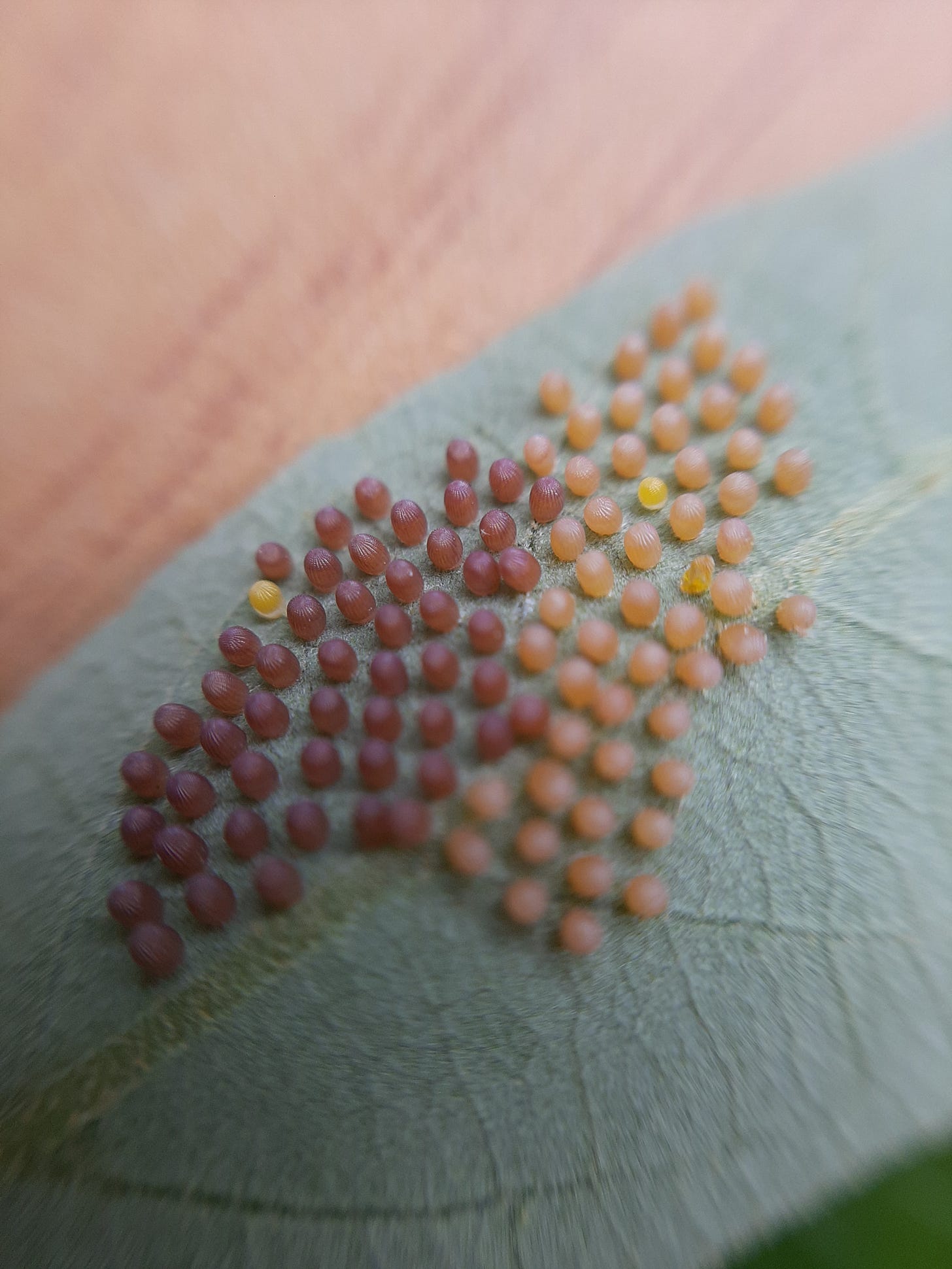
Newly hatched first instar caterpillars on a leaf. The silver/white patches indicate where each egg was attached to the leaf. As with many other moth and butterfly species the newly hatched larvae will consume the egg shell before moving off to start feeding on the plant.
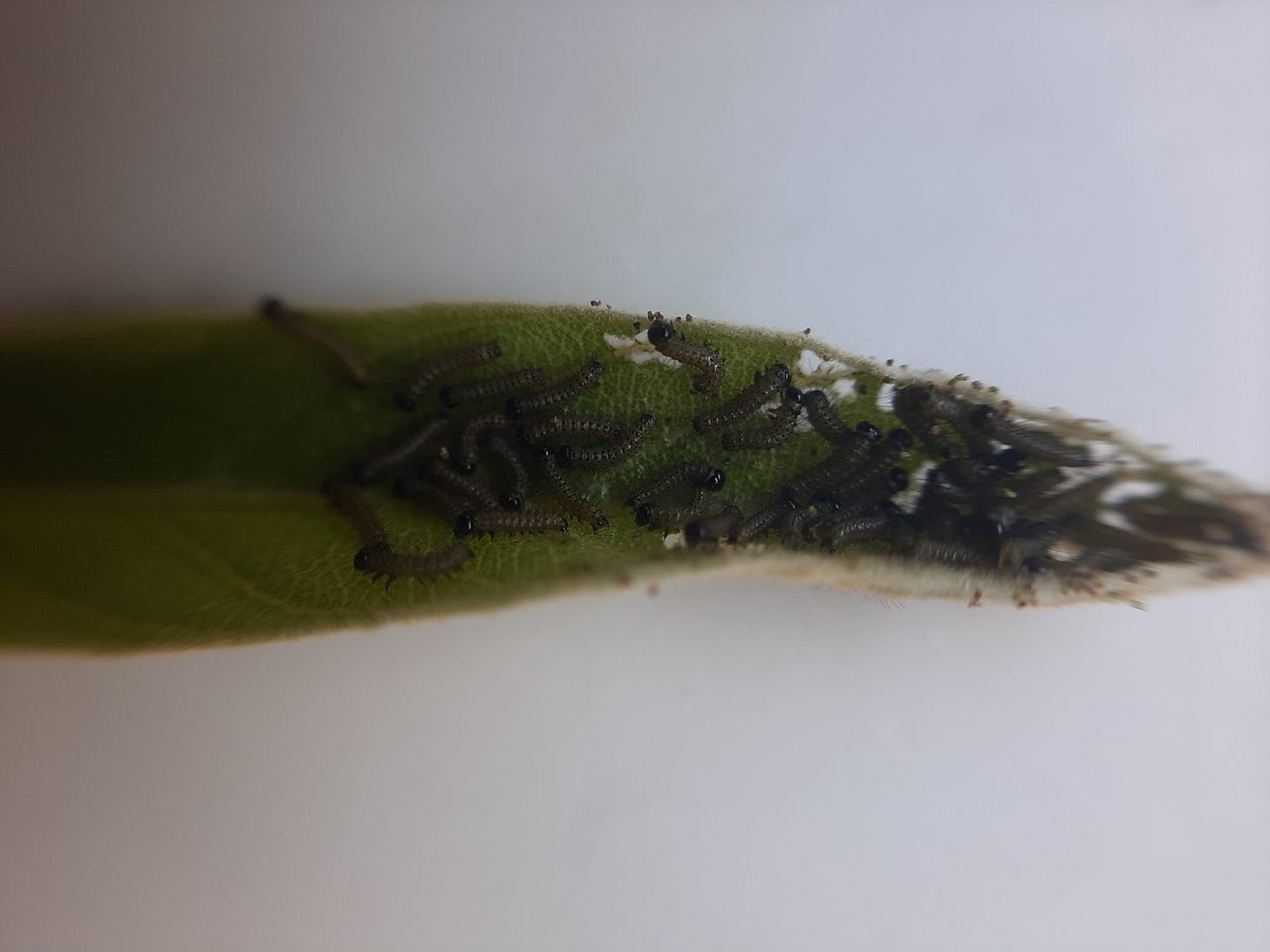
The caterpillars can sometimes occur in large numbers on the trees and quite extensively defoliate the trees (Claassens, 2007). Once ready to pupate the fully grown larvae leave the tree in search of a place to pupate. Many of them end up on walls and other structures near the tree. It would appear as though the garden acraea is distasteful and that only cuckoos have been observed feeding on the larvae (Claassens, 2007). I would imagine that there would be a number of arthropod parasites and predators that do attack the larvae and/or the eggs, otherwise there would be much more defoliation taking place.
CLAASSENS, A. J. M. 2007. The garden acraea and the wild peach. Veld & Flora. Kirstenbosch: Botanical Society of South Africa.
PALGRAVE, K. C. 1977. Trees of southern Africa, Cape Town, C Struik.
PALMER, E. & PITMAN, N. 1961. Trees of South Africa, Cape Town, A.A. Balkema.
WOODHALL, S. Field guide to butterflies of South Africa, C. Struik.


